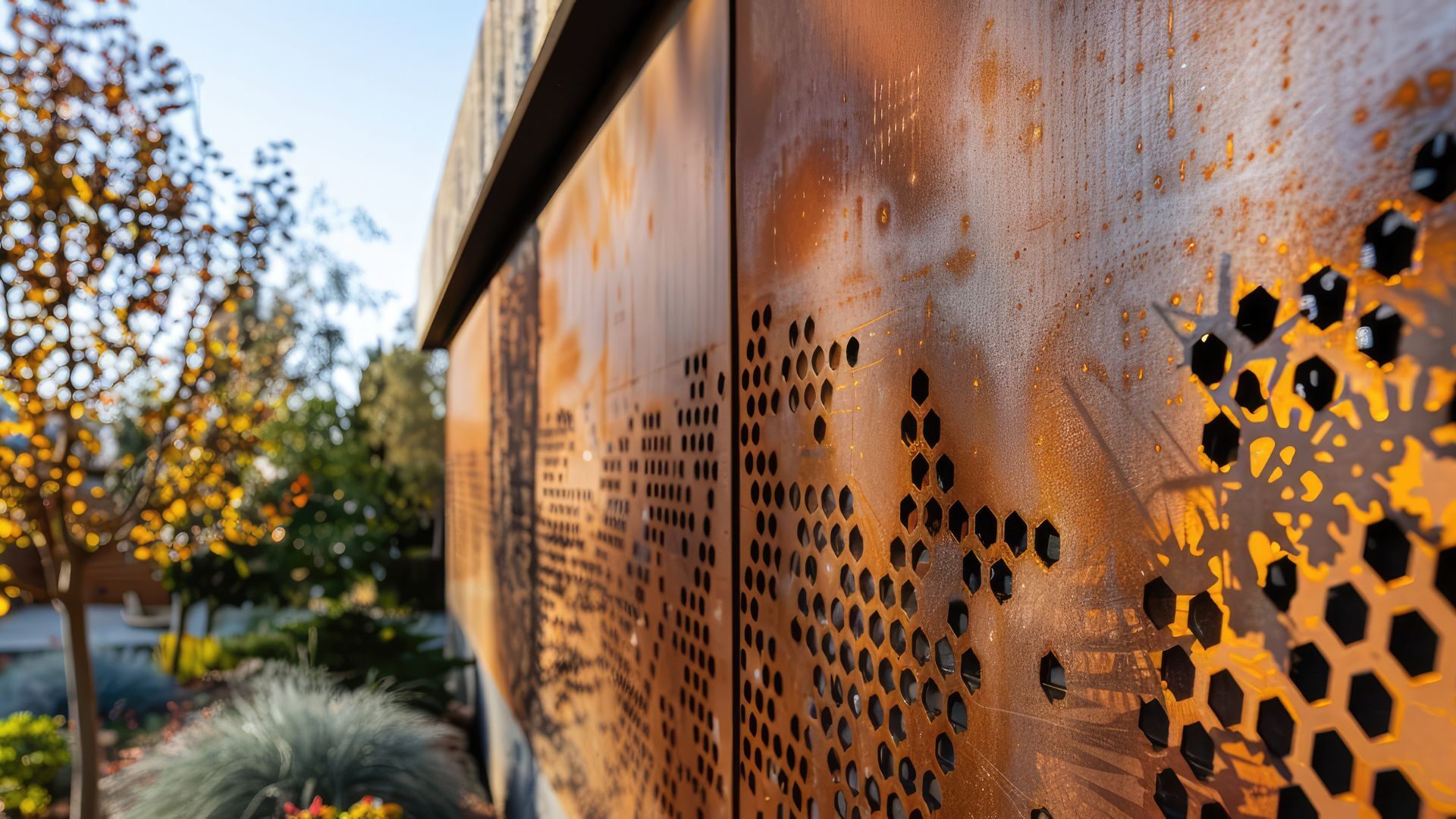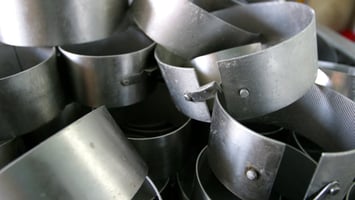In the world of construction and engineering, choosing the right metal for projects in harsh...
Kryton Metals Blog
Weathering Steel: Different Types, Processes, and Applications

Weathering steel in today’s manufacturing industry is widely known as COR-TEN steel (or simply Corten steel), which shares a fate much similar to brands like Jell-O and Kleenex, where the brand name is so popular that it becomes interchangeable for the generic class of the product itself.
Corten steel has skyrocketed in popularity as a durable and distinctive material across many architectural and structural applications. Its unique ability to develop a protective rust-like appearance over time not only adds aesthetic appeal but also enhances its resistance to corrosion in harsh outdoor environments. Understanding the different grades, process, and performance characteristics of weathering steel is essential for determining if it's the right material for your project.
HOW DOES IT WORK?
Ironically, weathering steel gains its unique properties of corrosion-resistance through a natural rusting process. When exposed to moisture and oxygen, the steel forms a protective layer of rust on its surface, which acts as a shield against further corrosion, while giving the steel a distinctive aesthetically-pleasing look, making it a popular choice for outdoor sculptures, architectural builds, landscaping features, and much more. Additionally, weathering steel is often used in construction for its strength, resilience, and low maintenance requirements, making it a versatile and sustainable option for various applications.
GRADES
The name COR-TEN, shortened into one word, stems from the combination of two different properties: corrosion resistance and tensile strength. Corten steel encompasses a range of low carbon alloy steels with various grades specifically tailored for certain applications. Within this family, the most standard designation that comes from the ASTM International standards group is A242, also known as COR-TEN A—yield strength of around 45,000 psi.
There are newer ASTM grades, such as A588 (COR-TEN B—yield strength of around 50,000 psi) and A606, that also exhibit exceptional resistance to corrosion, but some grades are meant specifically for aesthetics while others provide looks along with strength, with an increase in cost, of course.
METAL SPINNING
Even though weathering steel is rising more and more in popularity, there aren’t a lot of metal spinning companies out there that have yet adapted this unique steel into their material database—Kryton Engineered Metals being the exception. Weathering steel metal spinning entails shaping the steel blanks, typically a flat circular disc, into the desired shape through a spinning process.
After securing the blank onto a spinning lathe, the lathe rotates at high speeds with specialized tools molding the weathering steel blank into shapes such as domes, cones, cylinders, or much more intricate shapes. The spinning process can be tailored to achieve varying wall thicknesses and diameters, offering versatility in both design and functionality.
ADVANTAGES
There are many advantages for using weathering steel over mild steel or even other metals. Here are just a few pros for choosing Corten steel:
-
Protective rust-covered surface acts as a natural barrier against further corrosion
-
Reduced ongoing maintenance, such as re-painting and re-coating
-
Longer life span due to durability and corrosion resistance
-
Aesthetically-pleasing appeal to structures and architectural projects
-
Maintains strength and integrity in harsh environments
APPLICATIONS
There are many examples that use weather steel, such as architectural structures, bridges, building faces, shipping containers, railway wagons, transmission poles, and much more.
Within the artistic approach, there are many popular structures that incorporate weathering steel:
-
The Chicago Picasso - Daley Center Courthouse, Chicago, Illinois
-
Astor Place Cube (Alamo) - East Village of Manhattan, New York City, New York
-
Angel of the North - Gateshead, Tyne and Wear, England
-
Broadcasting Tower - Leeds Beckett University, Leeds, England
-
New River Gorge Bridge - Fayetteville, West Virginia
-
John Deere World Headquarters Building - Moline, Illinois
WRAPPING UP
Understanding how Corten steel and its different compositions work is crucial for businesses and manufacturers to choose the most suitable material for their applications. By selecting the right weathering steel alloy and type, projects can benefit from enhanced performance, durability, and cost-effectiveness. Whether it's for architectural, construction, or other industries, making informed decisions about weathering steel ensures long-term success and satisfaction with the final products.
Experience superior craftsmanship and precision with Kryton Engineered Metals. Our expertise lies in top-tier metal spinning solutions using durable, high-strength weathering steel, also known as Corten steel. Want to learn more about COR-TEN steel or interested in requesting a quote? Click here to get in touch with us!
Note: COR-TEN® is a trademark of United States Steel Corporation (USS).



